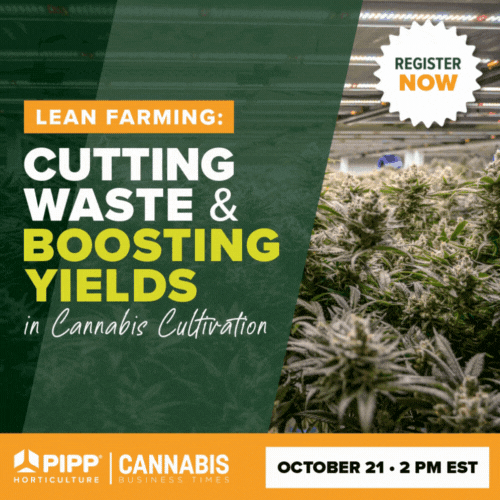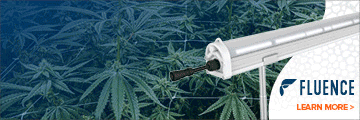
1. Modern lighting solutions are enabling growers to push their cannabis plants in new ways. Where does light intensity fit into the equation?
In the earliest days of cannabis cultivation, growers cultivated outdoors (leveraging pure sunlight) and experimented with fixtures designed for non-horticulture applications where they would be lucky to hit a photosynthetic photon flux density (PPFD) of 500 to 600 µmol/m2/s. Today, as investments in cultivation technology increase, growers are realizing the benefits of modern lighting solutions—specifically broad-spectrum LEDs—for improved yield, plant quality and crop consistency. Broad-spectrum LEDs can run at double or even triple the light intensities of the past without irradiating excess heat or damaging plant morphology through oversaturation. When implemented properly, growers can achieve remarkable outcomes in yield, cannabinoid and terpene content, and morphology with these higher light intensities. Intensity can correlate to thriving plants, but boosting intensity with inferior lights could damage plants before they can reap the benefits.
2. Is there a limit to how much light a cannabis plant can absorb?
That’s the question our research team is working on answering. We have run several experiments at high intensities, observed record yields and explored a point of diminishing return. Now, we’re focused on evaluating cultivar dependencies driven by varying genetics. We’re also replicating experiments with different cultivation strategies to help determine best practices, optimal light levels and maximum thresholds for high-PPFD cultivation. Fluence’s research program also has evaluated different spectra at high intensities and determined that higher red content affects plant development in both indoor and greenhouse applications. In our latest studies, the higher the spectrum’s red value, the higher the occurrence of phototoxicity, specifically photobleaching. We’re also learning how red light, even in broad spectra, can impact terpene and cannabinoid potency in finished products.
3. Lighting is such an integral piece of the cultivation puzzle. How can a grower factor in high light intensities without disrupting their operation?

Growing at higher light intensities requires nuanced adjustments to a cultivation program. Growers should tread carefully and be prepared to fine-tune their program if they wish to push the boundaries of high-PPFD cultivation. We understand growers have a lot on their plates and believe they shouldn’t carry this weight alone, so Fluence’s Horticulture Services team assists growers with building and implementing successful lighting strategies that complement their cultivation practices. We often recommend adjustments to key environmental parameters and follow growers’ programs closely to minimize disruption to their operations. When cultivation programs are optimized, growers see unbeatable yields and plant quality, which positively impacts their bottom line and exceeds their operational goals.
Learn more: fluence.science















